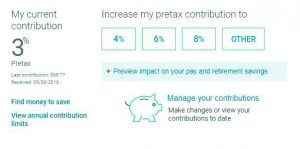Benefits Products & Services
Understanding consumers and helping them visualize income goals
Lincoln Financial Group’s (LFG) retirement plan advertising tagline—“You’re in charge”—could be an apt slogan for employees in most retirement plans today. Since defined contribution (DC) plans have become the dominant form of retirement plan, supplanting defined benefit pension plans, most employees have to rely on their own saving and investment decisions for their retirement security.
One tool LFG uses to guide plan sponsors, advisors, and intermediaries in helping DC plan participants “take charge” is an annual study of consumer attitudes about retirement security. Since 2012 the company has measured consumers’ sense of how their retirement preparation is proceeding. Then it probes what is standing in the way of making their retirement more secure.
LFG’s study is based on a survey of 2,509 full-time workers, ages 21-70, who have been contributing to their current employer’s DC retirement plan for at least a year, weighted by demographics to mirror the total population.

—Sharon Scanlon
Senior Vice President, Head of Customer Experience for Retirement Planning Services Lincoln Financial Group
In the last five years, the study shows, participants who say they are confident about their retirement savings have risen from 29% to 39%; those who say they are optimistic about their retirement savings have risen from 45% to 55% over those same five years. Those who said they are “anxious” about their retirement savings dropped from 41% in 2012 to 30% in 2017.
Jamie Ohl, president of LFG’s Retirement Planning Services, comments, “It’s good news that retirement savers are feeling more positive about their retirement savings, but there is a real disconnect between their feelings and their actions. The majority of the people we surveyed said they did not think they were saving as much as they needed to in order to be on track.”
In fact, only 40% of the participants were saving as much as they think is necessary, and among those who were saving less than what they think they need, 68% would need to increase their savings by five percentage points or more to be on track with general industry recommendations.
“They clearly understand what they need to do,” says Ohl. “Now they must go a little further by taking the actions needed to overcome the competing financial priorities that keep them from meeting their financial savings goals.”
The study asked about those other financial priorities and found that about half the respondents had three or more savings goals other than retirement—led by vacation or travel (59%); an emergency fund (48%); and home improvements (39%). Debt was listed as “a problem” by 58% of respondents. Younger employees generally have a greater number of competing priorities than older ones, but the percentage of employees who said they have three or more competing priorities is the same for employees in their 40s as those in their 30s.
To help plan participants take charge of their retirement in the face of shorter-term spending and savings priorities, LFG created a customer experience initiative. A goal was to simplify the interaction between plan participants and the company and to give participants a clear view of where their contributions are taking them. As part of that initiative, the company introduced a mobile-optimized website for plan participants last November.
Digital and more
Sharon Scanlon, LFG’s senior vice president and head of customer experience for retirement planning services, explains the thinking behind the website and other communications channels and how they are helping plan participants take charge.
 “One of the challenges we were seeing is that the industry focuses a lot of attention on its products—401(k), 457 or 403(b) plans—but at the end of the day, we wanted to take the principles that have been used outside our industry—in consumer goods, banking and retail merchandising—and bring that into the retirement space.
“One of the challenges we were seeing is that the industry focuses a lot of attention on its products—401(k), 457 or 403(b) plans—but at the end of the day, we wanted to take the principles that have been used outside our industry—in consumer goods, banking and retail merchandising—and bring that into the retirement space.
“We decided to create a multi-channel approach to interaction between the company and the plan participant,” Scanlon continues. “Digital was encouraged, but we recognize that some people may want to discuss their retirement plan with someone face-to-face. They may respond to a segmented email or they may want to pick up the phone and call somebody.”
At the website, LFG demonstrates retirement readiness scenarios to plan participants based on the percentage of their current income they might earn in retirement. The company lists a goal of 85% income replacement, and an employee can see how close they are to reaching that number. (See figure 1). A “Click to Contribute” screen (See figure 2) provides options for increasing contributions and shows the effect that those increases will have on retirement savings.
“By highlighting three options, we have found that 81% of the time people will pick the middle option for raising their contributions and even go a little higher,” says Scanlon. The clean, simple screen presentation has been effective. “Our average increase for contributing participants has been about 4%,” she says.
“In addition, the number of times users have accessed the site has increased by 40%, which means they are more engaged, and that’s something we really want to capitalize on.”
Basing the employee’s retirement readiness on an income replacement percentage has been an effective way of getting their attention, Scanlon says. “It’s a call to action, really. It enables us to engage them and keep the planning process simple. We know from our studies that people know they aren’t saving enough, so we want to make it digestible for them to do something positive.
“In reality, we’re not going to have access to information on the majority of everyone’s assets, but if we can get their attention so they will start digging a little deeper and make it easy for them to ask about improvements they can make—for example, by increasing their contribution amount—that’s a win.
 “The site does provide the ability to add information on assets or other sources of income. If the employee wants to discuss retirement planning in greater detail—for example, what your expenses would be in retirement—we have retirement consultants who meet with employees in person or on the phone or even through video conferencing to provide that level of education.
“The site does provide the ability to add information on assets or other sources of income. If the employee wants to discuss retirement planning in greater detail—for example, what your expenses would be in retirement—we have retirement consultants who meet with employees in person or on the phone or even through video conferencing to provide that level of education.
“The website also offers tools and calculators as part of a budgeting worksheet on the website, and next year we plan to launch a more robust financial solution to plan sponsors,” she adds.
Looking at the increased optimism and confidence that consumers surveyed by LFG have expressed over the last five years, Scanlon acknowledges that the stronger investment climate has contributed to consumers’ improving sentiments. However, she says an analysis of LFG plan participant behavior indicates the steps that LFG has taken with its customer experience initiative also are contributing to greater optimism.
“For example, when we asked the question in our most recent study, ‘If you increased your contribution rate in the last year, what drove that?’ The most common answer was ‘access to retirement income,’” Scanlon say. “So, they were talking about the income, not the product—information they were getting on our mobile app and our website. The second thing they mentioned was ‘access to tools and calculators’ and the third was ‘access to one-on-one consultation.’
“That’s a perfect example of why you need multiple channels. This was the same population, and they wanted all three of those ways to interact with us.”
LFG offers access to its retirement consultants who provide education, not advice, for plan participants who request it. Sometimes the company’s consultants will present seminars for plan sponsors on specific topics such as pre-retirement planning, including Social Security decisions.
“This type of education is important if employers want their employees to retire,” Scanlon points out. “A lot of employers want to be able to move up different employees within the ranks, and also it’s no secret that the older demographic increases the cost of healthcare.”
Any consultations that LFG arranges can supplement whatever a broker or consultant provides for a sponsor organization. The retirement plan services at LFG does business with approximately 1,500 people at intermediaries that include large consulting firms, regional consultants/advisors and local brokers.
Defined contribution retirement plan participants are in charge of their own future financial security. Ohl says, “As an industry, we have helped people understand the importance of saving. Now it’s up to us to help them save more so they can achieve the retirement they envision.”
The author
Thomas A. McCoy, CLU, retired in 2013 as editor-in-chief of Rough Notes magazine.





